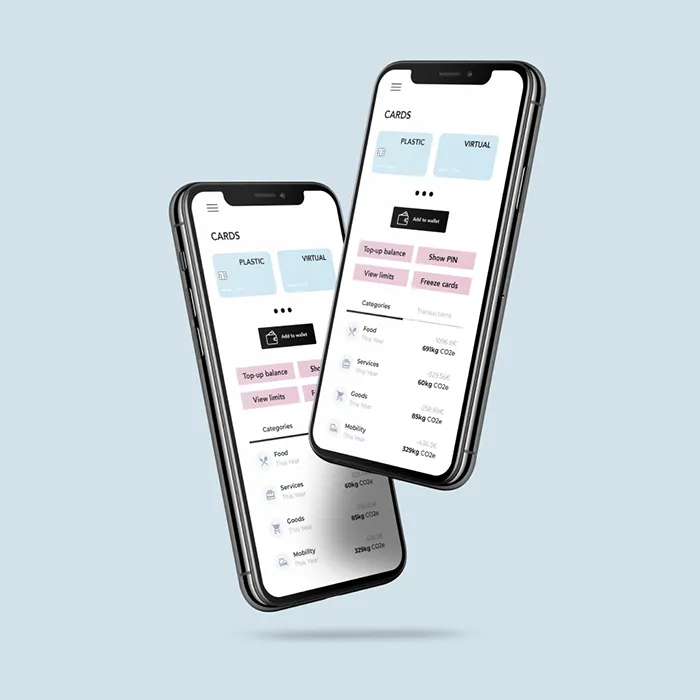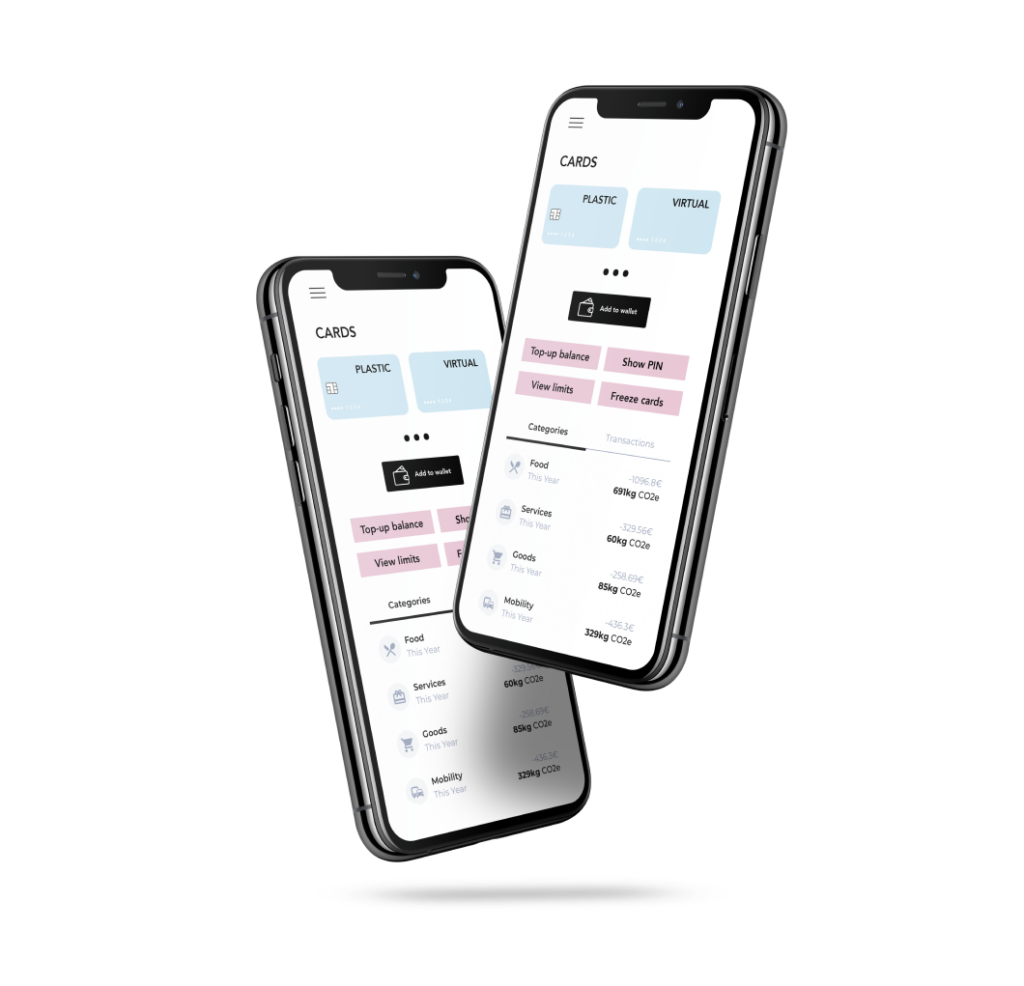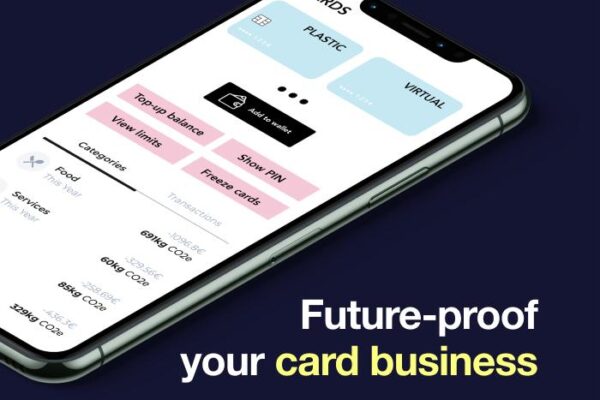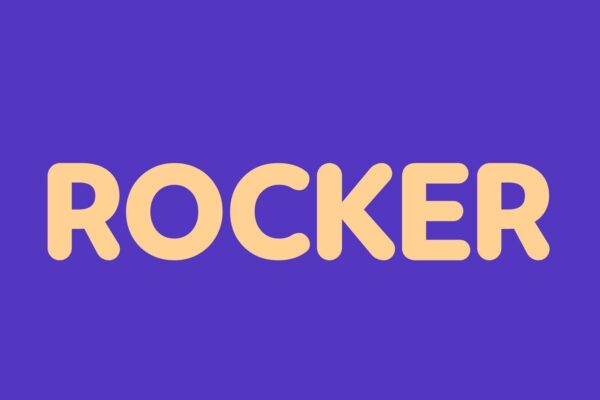Build a winning card business: Ten questions to ask yourself when designing a card solution

We have worked with leading fintechs across Europe, like Pleo and Rocker, to get their card businesses up and running, helping them design, launch and scale winning payment card products. Now, we have distilled our insights into this blog to help you build a card business suited for the 2020s.
By reading this blog, you’ll learn:
- What you need to consider when designing a payment card offering
- How to build a business case for your card solution step by step
Ask yourself these ten questions when designing a card solution
Assess and answer these ten questions to build a business case. Then, you will be ready to design a payment offering that aligns with your business strategy and has the right features to win on the market.
1. What are your business goals?
Take a top-down approach to your business to understand how a card product can support your business objectives. This lets you determine, what would be the right design for the solution, what kind of product mix should it have, and who you should partner with. This in turn helps you define a value proposition that resonates with your target market.
Here’s a list of relevant business objectives that your card solution could support your company to achieve:
- Realising your company’s overall mission and aspirations
- Attracting new customers by expanding your offering
- Diversifying revenue streams by expanding product offering or growing engagement
- Targeting a promising market or segment gap
- Improving conversion rate or streamlining customer onboarding
- Differentiating yourself from the competition
- Future-proofing your business and securing market relevance
2. Are there critical pain points in your business?
Adding cards to your offering can help you overcome a key pain point or bottleneck in your business. It can also help in building the business case for renewing legacy architecture.
Is your business facing any of the following pain points that the card solution could help solve?
- Issues with customer retention or perceived value of your service
- Losing customers to emerging competitors
- Inability to grow your product or market footprint
- Coping with increasing regulation
- Upgrading and renewing your technology stack
3. Who are your target customers?
Your target customer base heavily determines the success of a given card product. Make sure to tailor specific payment solutions to relevant user segments.
Start by asking yourself, whether your target customers are individuals or businesses. Then, think about what kind of demographics – age, gender, occupation – they represent. Your customers also have different behaviours. Some seek certain concrete benefits, some are more loyal than others. The timing of their purchases may vary.
Your customers’ lifestyles, interests and attitudes also set them apart. For example, some customers prioritise sustainable buying choices. That’s why you want to ask yourself, how a payment card could help your customers convey status or express their lifestyles.
4. What are they buying and where?
Try to understand your target customers’ buying behaviour. What products and services are they spending on? What added value can you bring to them? What customer needs can you fulfill?
Then, figure out the marketing channels where you can reach them. Do your customers shop at brick and mortar stores or do they prefer e-commerce? Is the best way to reach them through your own web or mobile channels, partner channels or social media? How do they find online marketplaces or in-app purchases? These questions are key in designing the right payment solution.
5. What experiences do you want to create for your cardholders?
Start thinking about the use cases. Seamless payments are key to a world-class customer experience. Build a modern, flexible and most of all intuitive cardholder journey.
Make a decision on what kind of an end-to-end user journey and experience you want to provide. Choose a payment flow that makes sense for your service. It could be part of the mandatory service flow or an optional feature your customers can choose from a menu bar.
Imagine, how the user flow looks like from the cardholder’s point of view. Consider the card application, cardholder onboarding, usage scenarios and deactivation. What would be a cleverly designed onboarding journey that would fulfill your end-user value proposition, for instance, being able to give out virtual or physical cards instantly? How can you avoid having many redirection steps, high decline rates or other inconveniences in your payment journey?
Use our calculator and get a price estimate.
6. Which geographies or markets are you targeting?
Many factors come into play when designing a scalable payment solution. Countries vary in terms of consumer behaviour, payment infrastructures and regulation. This will impact both your issuing setup in each geography, as well as the card product itself. Define your desired geographic scope early on, so you can achieve the optimal issuing setup and card solution.
One of the first decisions you need to make is about the initial market entry – where should you go first? Start by considering these things:
- Size of your target market
- Potential barriers to entry
- Market maturity for product adoption
- Payments-related market dynamics
- Regulations
- Whether the market can serve as a testbed for validating a broader service offering
How much does it cost to launch your card product?
When it is time to scale your business internationally, assess your ambitions for expansion. Think about different countries, currencies and products. When it comes to product expansion, think about how your product offering will evolve in the future. You could for example start by issuing prepaid cards. Then, you can later add more sophisticated credit products and extra features.

Through Enfuce Card as a Service, you’ll get access to the newest digital payments features that we’ve been building since becoming the first payment processor in public cloud, running on AWS.
7. What’s your business model?
Your card product should be underpinned by a sustainable business model. This will power your customer acquisition and monetisation. Your business model also impacts everything from the user journey to user experience – how your card product looks and feels to the end user.
There are multiple ways you can monetise your card products. You can for example offer your card:
- As part of your subscription service
- With a tiered interest rate – depending on a customer’s payment activity and loyalty
- For free – as a driver for increased customer spend and loyalty
- With usage fees collected from the cardholder
8. Who are your competitors and what payment products do they provide?
Get familiar with the competitive landscape before positioning your own payment service. Learn to understand your competitors and their offering. How do they approach the payments business?
If you understand what the market expects for features, pricing and other qualities, you can avoid making some costly mistakes. You can benchmark your business against the first movers in your market. Then you will understand how they managed to shape consumer expectations and behaviors.
9. What payment capabilities and systems do you have in place?
The question to ask is: should you build or buy? Your business needs various enablers in place before issuing payment cards. Which enablers do you provide in-house, and which ones do you need to secure from third-party providers?
Evaluate, whether your company has:
- Customer Relationship Management (CRM) and core banking systems supporting seamless integration to the card management system
- Existing card products or loyalty modules in your offering
- Existing capabilities required for card issuing
- Payment institution licenses in place
- Access to supporting systems like a web or mobile application for cardholders, Strong Customer Authentication (SCA), Know Your Customer/Business (KYC/B), cardholder onboarding
- End user mobile app for e.g. onboarding and viewing transactions
10. When and how are you aiming to launch?
Finally, think about the timeline. The features and scope of your initial card solution – and the markets it covers – depend on how soon you are hoping to launch.
Think about the minimum marketable product and when you could go live with it. Then, think about how you will market your product to meet cardholder acquisition and commercial targets. Consider for example key product messages, target segments, channels and timing. Assess whether it is possible to launch a limited offering to validate the market, and later expand the scope and features of your service.
Get ready to launch the winning card programme
Follow these step-by-step guidelines to define the objectives for your card business. You will now be ready to design a future-proof card programme!
If you have any questions about designing a card solution, please do not hesitate to contact us.
Additionally, our comprehensive guide has everything you need to know to launch the winning payment card programme.




